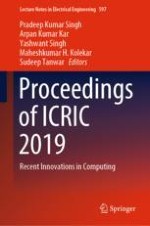This book presents high-quality, original contributions (both theoretical and experimental) on software engineering, cloud computing, computer networks & internet technologies, artificial intelligence, information security, and database and distributed computing. It gathers papers presented at ICRIC 2019, the 2nd International Conference on Recent Innovations in Computing, which was held in Jammu, India, in March 2019. This conference series represents a targeted response to the growing need for research that reports on and assesses the practical implications of IoT and network technologies, AI and machine learning, cloud-based e-Learning and big data, security and privacy, image processing and computer vision, and next-generation computing technologies.
